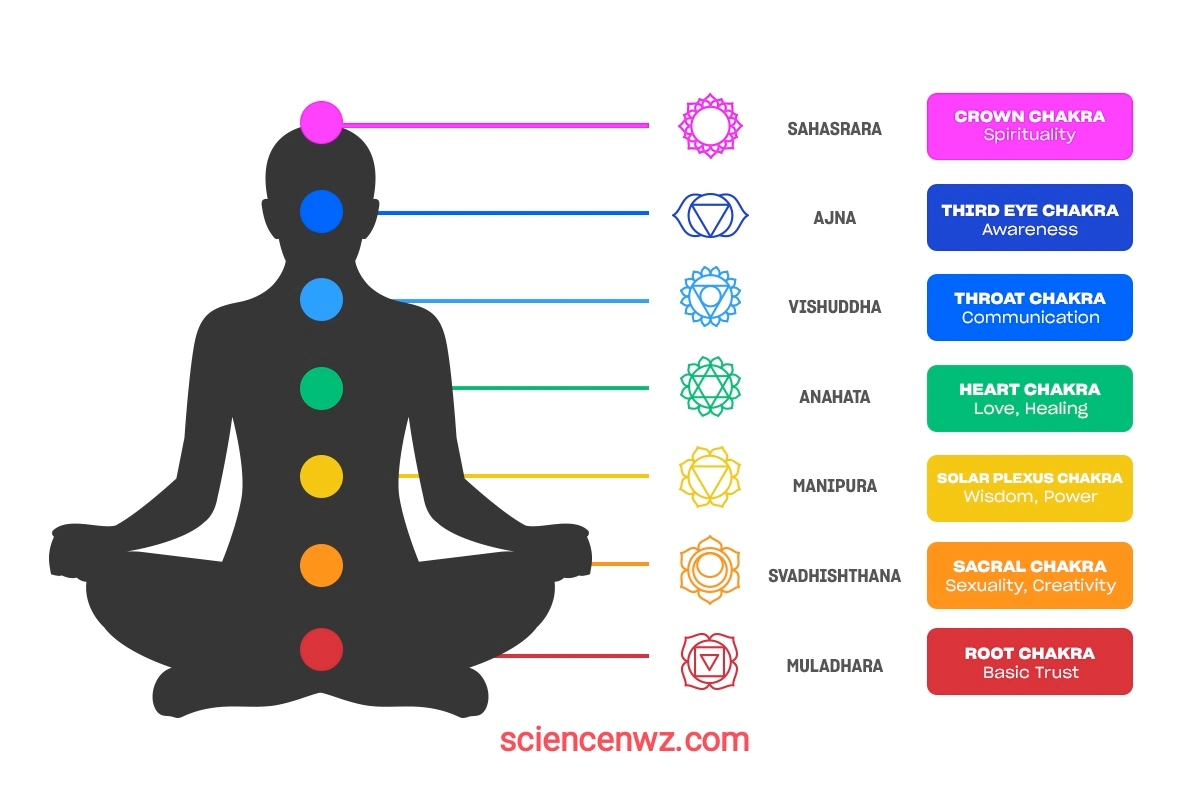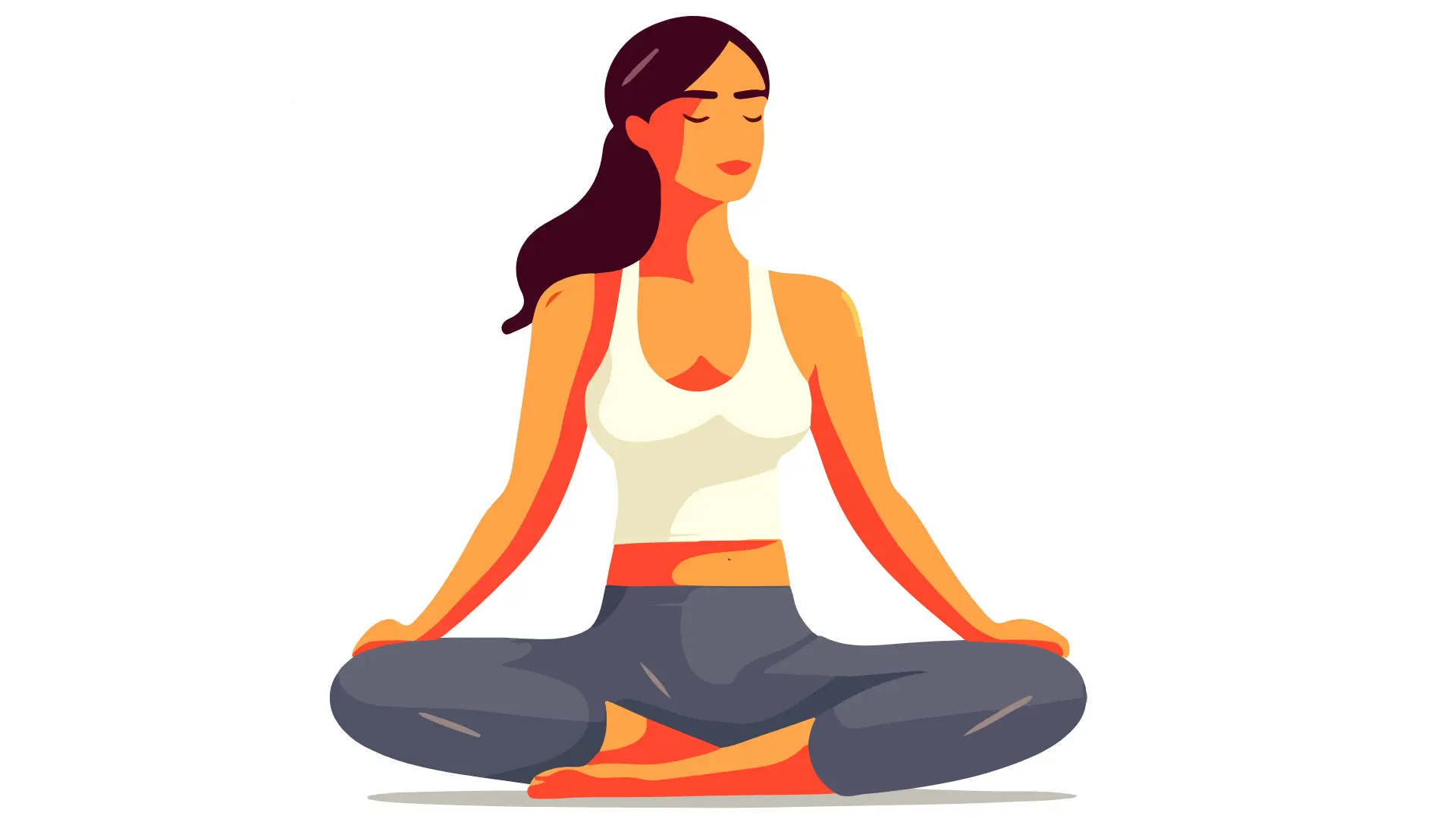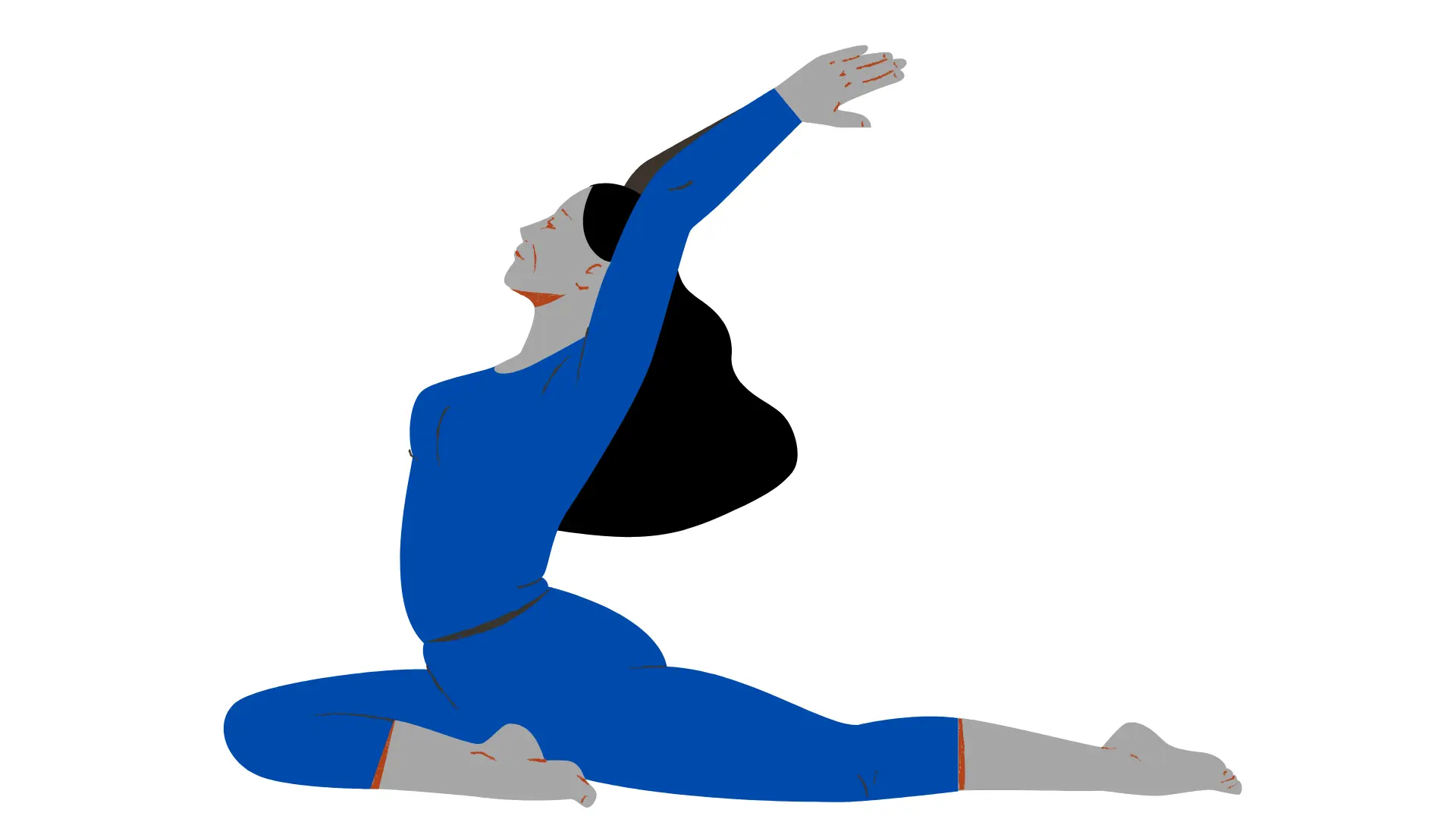What is Solar Plexus
The solar plexus, scientifically known as the celiac plexus, is a network of nerves located in the abdomen, near the stomach. It’s like a communication center for various vital organs in that region, including the stomach, liver, pancreas, and intestines.
Imagine it as a web of tiny messengers that relay important signals between these organs. These messages help regulate functions like digestion, absorption of nutrients, and blood flow. So, in simpler terms, the solar plexus is like the traffic conductor for important information in your belly, making sure everything runs smoothly.
Read : How to Increase photosynthetic Efficiency
Solar Plexus Chakra
The solar plexus chakra, a part of seven chskras, is a concept from Eastern spiritual traditions, particularly in practices like yoga and meditation. It’s believed to be an energy center located in the upper part of your belly, around the area of your diaphragm. This chakra is often associated with qualities like confidence, personal power, and self-esteem.
Think of it as a swirling ball of energy that influences how you feel about yourself and your abilities. When this chakra is balanced and open, it’s like having a strong and steady inner flame, giving you a sense of purpose and self-assuredness. However, if it’s blocked or out of balance, it can lead to feelings of insecurity or a lack of confidence.
People often use practices like meditation, breathing exercises, and specific yoga poses to help balance and activate their solar plexus chakra, aiming for a greater sense of self-assurance and empowerment. Keep in mind, though, that this concept is part of a spiritual belief system and may not be scientifically proven. It’s more about exploring and nurturing your inner self in a holistic way.
Read Also : Disease X : The Next Pandemic
How many Solar Plexus Chakras are There?
In most spiritual traditions that recognize chakras, including the Hindu and Buddhist systems, there are typically seven main chakras. The Solar Plexus Chakra, also known as the Manipura Chakra in Sanskrit, is the third chakra among these seven. It is associated with the upper abdomen, specifically around the area of the diaphragm. Each chakra is believed to correspond to specific qualities and aspects of our consciousness.
What are The Seven Chakras?
According to Hinduism and Buddhism, the seven main chakras are:

1. Root Chakra (Muladhara)
Located at the base of the spine.
2. Sacral Chakra (Svadhisthana)
Positioned in the lower abdomen.
3. Solar Plexus Chakra (Manipura)
Found in the upper abdomen.
4. Heart Chakra (Anahata)
Located in the center of the chest.
5. Throat Chakra (Vishuddha)
Situated in the throat area.
6. Third Eye Chakra (Ajna)
Positioned between the eyebrows .
7. Crown Chakra (Sahasrara)
At the top of the head.
Each of these chakras is believed to influence different aspects of our physical, mental, and spiritual well-being. Balancing and aligning them is thought to promote overall harmony and vitality.
Details Functions of Seven Chakras According to Eastern Belief
According to the belief the functions associated with each of the seven chakras are :
1. Root Chakra (Muladhara)
– Provides a sense of stability and security.
– Influences basic survival needs like food, shelter, and safety.
– Governs feelings of groundedness and connection to the physical world.
– Affects feelings of safety, trust, and a sense of belonging.
– Balancing this chakra can enhance feelings of stability and self-assuredness.
2. Sacral Chakra (Svadhisthana)
– Influences emotions, creativity, and sexual energy.
– Governs pleasure, passion, and intimacy.
– Facilitates the ability to experience and express emotions.
– Associated with creativity, artistic expression, and sensuality.
– A balanced sacral chakra fosters healthy emotional expression and creativity.
3. Solar Plexus Chakra (Manipura)
– Governs personal power, self-esteem, and confidence.
– Influences ambition, motivation, and a sense of purpose.
– Regulates the digestive system and metabolic functions.
– Associated with assertiveness and a strong sense of self.
– A balanced solar plexus chakra leads to a strong sense of self-worth and self-assuredness.
4. Heart Chakra (Anahata)
– Governs love, compassion, and emotional balance.
– Influences the ability to give and receive love and affection.
– Facilitates empathy, forgiveness, and acceptance of others.
– Associated with harmonious relationships and feelings of interconnectedness.
– A balanced heart chakra fosters loving and compassionate interactions.
5. Throat Chakra (Vishuddha)
– Regulates communication, self-expression, and speaking one’s truth.
– Influences the ability to articulate thoughts and ideas clearly.
– Governs the thyroid gland and the respiratory system.
– Associated with effective communication and honest expression.
– A balanced throat chakra leads to authentic and clear communication.
6. Third Eye Chakra (Ajna)
– Influences intuition, insight, and inner wisdom.
– Governs the pineal gland and the endocrine system.
– Associated with clarity of thought and perception.
– Facilitates inner knowing and the ability to see beyond the physical world.
– A balanced third eye chakra enhances intuition and spiritual awareness.
7. Crown Chakra (Sahasrara)
– Connects to higher consciousness, spiritual enlightenment, and universal awareness.
– Influences the sense of unity and oneness with the universe.
– Governs the pineal gland and the central nervous system.
– Associated with a deep sense of purpose and spiritual connection.
– A balanced crown chakra leads to a profound sense of spiritual fulfillment and purpose.
It’s important to note that these functions are described within the framework of spiritual and holistic practices, and may not align with conventional scientific understanding.
Are These Chakras Real ??
I will describe this from both spiritual and scientific viewpoint :
From a spiritual perspective, chakras are considered vital energy centers in the body, influencing various aspects of our well-being. According to this belief, these energy centers can be balanced and aligned through practices like meditation, yoga, and energy work to promote physical, emotional, and spiritual harmony.
However, from a scientific standpoint, chakras are not recognized as tangible, anatomical structures. The concept of chakras is rooted in ancient spiritual traditions, particularly in Hinduism and Buddhism. While these practices have their own cultural and philosophical significance, they do not align with contemporary medical or scientific understanding.
In summary, spiritually, chakras hold significant value in various holistic practices, but they do not have a scientific basis in terms of measurable anatomical structures or energy centers in the human body.
What are the symptoms of solar plexus problems?
When it comes to holistic or energy-based practices, such as those involving chakras, imbalances or blockages in the solar plexus area are believed to manifest in various physical, emotional, and mental ways which may not be medically proven.
Physical Symptoms
1. Digestive issues or disorders, like indigestion or stomachaches.
2. Nausea or a sensation of “butterflies” in the stomach.
3. Weight fluctuations or difficulty maintaining a healthy weight.
4. Lower back pain or discomfort in the upper abdomen.
Emotional and Mental Symptoms
1. Low self-esteem or a lack of confidence.
2. Feelings of insecurity or a constant need for validation.
3. Difficulty asserting oneself or setting boundaries.
4. Fears related to personal power and success.
5. Mood swings, irritability, or a tendency towards anger or aggression.
Behavioral Symptoms
1. Avoidance of challenges or situations requiring assertiveness.
2. Overemphasis on external validation or success for self-worth.
3. Procrastination or avoidance of taking responsibility for one’s life.
Disclaimer : It is crucial to remember that these symptoms are not medically substantiated, and any persistent or severe symptoms should be discussed with a qualified healthcare professional.
Read Also : Gene Pharming
What is the gift of the solar plexus?
If the solar plexus chakra is balanced and maintained properly, it can bring forth several positive attributes:
1. Confidence and Self-Assurance
A strong sense of self-worth and belief in one’s abilities.
2. Personal Power
The ability to take charge of one’s life and make decisions with conviction.
3. Motivation and Ambition
A drive to pursue goals and aspirations with determination.
4. Healthy Boundaries
The capacity to set and maintain boundaries in relationships and situations.
5. Inner Strength
A resilient core that enables one to face challenges with courage and resilience.
How do I unblock my solar plexus chakra?
To unblock your solar plexus chakra, you can try these simple practices:
Meditation and Visualization
Find a quiet, comfortable space. Close your eyes and imagine a warm, golden light radiating from your upper abdomen. Picture it growing brighter and spreading throughout your body, dissolving any blockages.
Breathing Exercises
Practice deep, mindful breathing. Inhale slowly, letting your abdomen rise, and exhale fully. Imagine each breath clearing any stagnant energy in your solar plexus area.
Affirmations
Repeat positive statements like “I am confident” or “I am worthy” regularly. Believe and feel the truth in these words, allowing them to resonate within you.
Yoga Poses
Certain yoga poses, like the Boat Pose (Navasana) or the Warrior Poses (Virabhadrasana), can help stimulate and balance the solar plexus chakra.
Crystals and Gemstones
Carry or meditate with crystals like citrine, tiger’s eye, or yellow jasper. These are believed to resonate with the energy of the solar plexus.
Wearing Yellow
The color associated with the solar plexus chakra is yellow. Wearing yellow clothing or accessories can help align and balance this energy center.
Self-Expression
Engage in activities that allow you to express yourself, like writing, painting, or dancing. This fosters a sense of empowerment and helps open up your creative energies.
Balanced Diet
Consume foods that are nourishing and support your digestive system, as the solar plexus chakra is linked to this area. Opt for whole, natural foods.
Remember, consistency is key. Regularly incorporating these practices into your routine can help promote balance and harmony in your solar plexus chakra. Trust in the process and be patient with yourself.
- Big Discovery Underneath the Khafre Pyramid
- Refer and Earn by Gromo App : Your Unlimited source of Passive Income
- Digital Arrest Meaning with Real Incident
- The Fourth Industrial Revolution & 100 Years of AI (1950-2050)
- Image of Dead Star’s Remnants Captured
What is the solar plexus also known as?
The solar plexus is also known as the celiac plexus or coeliac plexus.
What is the Sanskrit of solar plexus chakra?
The Sanskrit name for the solar plexus chakra is “Manipura.”
Is the solar plexus a brain?
No, the solar plexus is not a brain. The solar plexus, also known as the celiac plexus, is a complex network of nerves located in the upper abdomen, near the stomach.
In contrast, the brain is a highly complex organ located in the head. It is the central processing unit of the nervous system and controls a wide range of bodily functions, thoughts, emotions, and behaviors. While both the solar plexus and the brain are crucial for bodily functions, they serve different roles and are located in different parts of the body.





1 thought on “Solar Plexus Chakra”